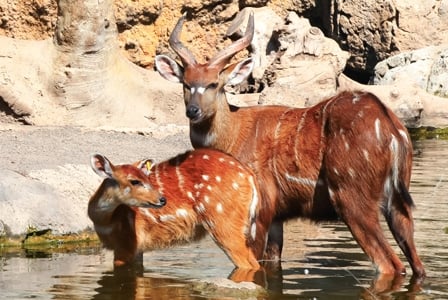
No, were not talking about the drums – were talking about the masked antelope that roams Africas forests. On this Wildlife Wednesday, we learn about the bongo.
No, we’re not talking about the drums—we’re talking about the two subspecies of unusual, masked ungulates that roam through Africa’s forests. On this Wildlife Wednesday, we learn about the bongo.
Habitat
The smaller lowland bongo (or western bongo) makes its home from Sierra Leone to Benin and from Cameroon to southern Sudan. Its larger counterpart, the mountain or eastern bongo, can be found in four isolated pockets in Kenya.
Trivia
- When it comes to antelopes, the general rule is that only the males have a proud rack of horns. However, both males and female bongos sport long, spiralling horns that can be up to 99 cm long.
- The size of their horns may be appropriate considering that they’re the largest forest-dwelling antelope species out there. They’re even bigger than their cousin, the oryx.
- Their 10 to 15 white streaks and their chestnut coloured coat also makes them one of the most colourful antelope species out there—though, oddly enough, the distinct reddish hue of their fur can rub off quite easily.
Why are they threatened?
In the past, these horned herd members were safe from hunters because of a superstition that anyone who touched or ate a bongo would suffer from uncontrollable spasms. Unfortunately, superstition can only do so much.
Both bongo species face population decline due to hunting and habitat loss. The situation of the mountain bongo is especially dire, since these particular plant eaters are considered critically endangered by the IUCN; recent estimates suggest that there are no more than 140 animals in the wild.

















